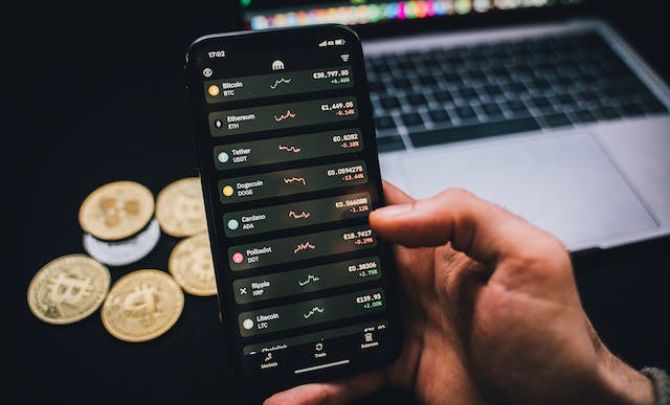In the volatile world of BTC trading, mastering effective exit strategies is paramount. This article delves into the significance of optimizing exit strategies and provides insights into the key components of success in cryptocurrency trading. Unlock the potential of Bitcoin trading by visiting https://immediate-flik.com/, where even beginners can execute profitable trades and maximize their earnings. This website makes it easier to access investment information to learn the ropes before going over the intricacies of investing.
Market Orders vs. Limit Orders
In the world of BTC trading, understanding the fundamental distinction between market orders and limit orders is paramount. These two order types form the core of any trader’s toolkit, and mastering their nuances can significantly impact one’s trading success.
Market orders are, in essence, straightforward transactions executed at the current market price. When a trader opts for a market order, they are essentially instructing the exchange to purchase or sell BTC immediately at the best available price. This immediacy can be both a strength and a weakness. On the positive side, market orders guarantee execution, ensuring that your trade goes through promptly. However, this convenience comes at the cost of potentially paying a slightly higher price when buying or receiving a lower price when selling, as market conditions can change rapidly.
On the other hand, limit orders offer traders more control over the price at which their trade is executed. When placing a limit order, traders specify the exact price at which they are willing to buy or sell BTC. This precision allows for strategic decision-making. For instance, a trader may set a buy limit order at a price they deem favorable, patiently waiting for the market to reach that level. Similarly, a sell limit order can be placed at a target price for selling BTC when it reaches a desired profit level.
The advantages of limit orders are clear. They enable traders to optimize their entry and exit points, potentially securing more favorable prices than market orders. However, there is a trade-off in terms of execution certainty. Unlike market orders, limit orders are not guaranteed to execute immediately. They will only be filled when the market reaches the specified price level. Consequently, there is a risk that the trade may not be executed at all if market conditions do not align with the limit order.
In summary, the choice between market orders and limit orders hinges on your trading strategy and risk tolerance. Market orders provide immediacy but may result in slightly less favorable prices, while limit orders offer control over price but come with the uncertainty of execution timing. Successful BTC traders often use a combination of both order types, depending on the specific market conditions and their trading goals, striking a delicate balance between precision and swiftness to optimize their trading outcomes.
Stop-Loss Orders
In the realm of BTC trading, understanding and effectively utilizing stop-loss orders is an essential element of risk management and safeguarding one’s investments. A stop-loss order is a predefined instruction that allows traders to limit potential losses by automatically selling a certain amount of BTC when its price falls to a specified level. This tool serves as a protective measure, aiming to prevent significant financial setbacks in volatile cryptocurrency markets.
The primary advantage of a stop-loss order lies in its ability to mitigate losses during adverse market movements. When a trader sets a stop-loss order, they establish a threshold at which they are willing to exit their position to limit further losses. For instance, if a trader owns a BTC valued at $10,000 and sets a stop-loss order at $9,000, the order will trigger an automatic sale if the price drops to or below $9,000. This proactive approach can prevent substantial declines in the value of the investment.
Moreover, stop-loss orders offer psychological relief to traders by automating a crucial decision-making process. In highly volatile markets, emotions often come into play, leading to impulsive decisions. The presence of a well-placed stop-loss order eliminates the need for impromptu actions, helping traders maintain discipline and stick to their predefined risk management strategies.
However, traders must use stop-loss orders judiciously. Setting the stop-loss level too close to the current market price may result in premature triggering due to normal market fluctuations, potentially leading to unnecessary losses. Conversely, placing the stop-loss too far from the entry price can expose traders to larger losses in the event of a significant market downturn.
Conclusion
In the ever-evolving landscape of cryptocurrency markets, the importance of well-crafted exit strategies cannot be overstated. Armed with knowledge about market and limit orders, stop-loss tactics, and comprehensive risk management, traders can navigate the BTC terrain with confidence, poised for long-term success in this dynamic and challenging arena.
